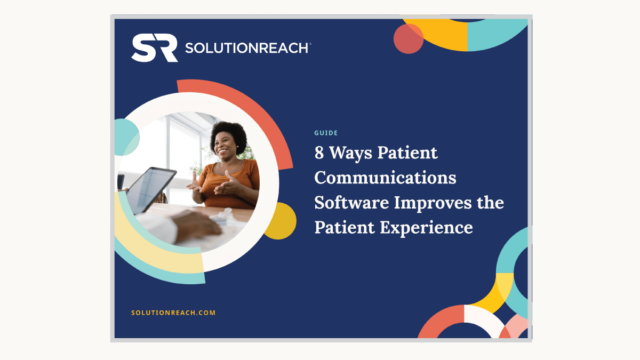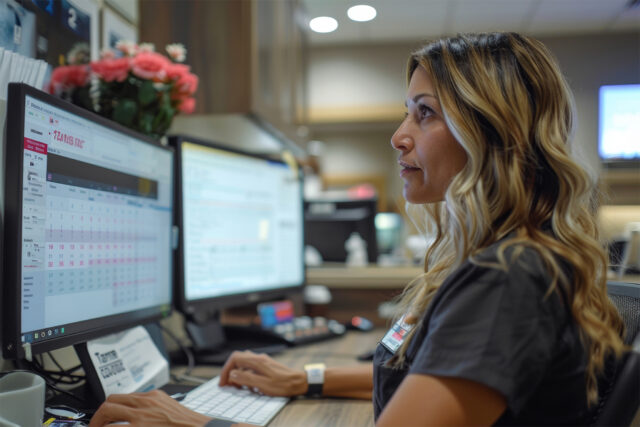In a perfect storm of cause and effect, more Americans are delaying or forgoing healthcare at a time when receiving preventive healthcare is more critical than ever. Though preventive care was the major reason for 34% of all medical provider visits in 2020, nearly 40% of people said they or a family member skipped or delayed healthcare in 2022, a 12% year-to-year increase.
Many patients delayed getting medical care, including preventive care, in 2020–2021 due to the pandemic. But now a majority of U.S. adults say record healthcare costs from inflation are keeping them away from the doctor’s office. That’s despite the preponderance of evidence that preventive care is key to helping people experience overall better health outcomes and avoid or early detect disease and other chronic illnesses/conditions.
In this article, we’ll look at the crucial role preventive healthcare, early education, and health literacy play in producing optimal patient outcomes and well-being and how delivering targeted patient education content can help you encourage your patients to book needed care and recall appointments for relevant checkups, screenings, and treatments.
What is Preventive Healthcare?
Preventive services, treatments, and products can both help prevent illness (primary prevention) and identify problems early (secondary prevention) when clinical interventions are most beneficial. It includes services such as:
- 6-month dental hygiene and oral health checkups
- Annual vision screenings
- Annual physical exams and wellness screenings
- Regular vaccinations/immunizations
- Preventive treatments and products
Preventive healthcare also comprises diagnostic screenings for deadly chronic conditions like cancer, heart disease, and diabetes. Routine screenings and tests can help patients prevent, identify and mitigate diseases for better overall outcomes. 81% of patients who trust their country’s healthcare engaged in some sort of preventive care in 2022.
How Effective is Preventive Care to Patient Health Outcomes?
There’s a boatload of clinical evidence to support the fact that preventive healthcare really works, including the following:
- A study in the Journal of the American Osteopathic Association showed that just 45 minutes of patient health education can improve chronic disease management.
- Routine cardiovascular exams alone save tens of thousands of adult lives each year, according to the U.S. Dept. of Health and Human Services’ Healthy People program.
- Preventive screenings and primary care consultations have also been found to significantly increase life expectancy, particularly among those ages 30–49.
Similarly, 6-month dental hygiene visits and annual vision screenings are critical to maintaining optimal dental and vision health conditions while helping providers detect diseases and conditions early on to minimize their effects.
But despite this evidence and the wide availability of healthcare services to most Americans, your patients need greater encouragement and support from you to schedule preventive care, exams, and screenings.
- Though 4 in 5 Americans have health insurance, 1 in 4 didn’t get a routine checkup in 2019.
- 36% of adults didn’t have a dental exam or cleaning in 2022.
- Though 2 out of 3 U.S adults have some time of managed vision care coverage, 41% of adults didn’t have a vision screening in 2022.
How Important Is Patient Education?
Patients themselves want and expect to get patient education and health literacy content from their healthcare providers to help them maintain good health, assist in disease prevention and avoid unnecessary treatments and expensive healthcare costs:
- 94% of patients would use patient education materials if their providers made them available.
- Only 63% of patients say they routinely get educational content from their providers.
- 68% of patients said getting patient education increases the odds they’ll return to that provider, boosting patient engagement and loyalty.
As a result, nearly 84% of adults had a visit with a doctor or other healthcare professional in 2022.
Why are Patient Newsletters an Efficient and Effective Way to Share Patient Education?
Patient education newsletters can be a pivotal method for you to provide targeted patient education and health literacy information to patients. By proactively engaging your patients through educational newsletters at regular intervals, you can establish greater trust and foster a sense of partnership. Offering patient education also increases patient satisfaction, improves treatment plan adherence, and improves overall health outcomes. After all, 85% of patients enjoy receiving and reading their patient newsletter.
Benefits of Patient Education for Preventive Care
- Patients are better able to make informed decisions.
- Patients are aware of alternatives
- Lower readmittance rates.
- Preventive care education can reduce health risks.
An automated patient education newsletter solution allows you to easily send branded newsletters with preventive health articles and information from an expansive and ready-to-go template library. Efficiently send your patients information on preventive procedures and products your office offers, as well as targeted preventive care articles to specific patient care groups based on age, sex, or diagnosis.
To make preventive care even more accessible to your patients, you can include a clickable link in your newsletters for them to conveniently schedule an appointment online. This saves patients the trouble of having to phone your office to book a visit.
Key Takeaways
Preventive healthcare education plays a pivotal role in helping you be more proactive about seeking needed care and testing before problems arise. Your patients want and expect you to share relevant preventive care information and articles to help them better manage their care and achieve better health outcomes. An automated patient education newsletter tool can help you quickly and effectively deliver targeted preventive care patient education to create more informed and literate patients while boosting patient satisfaction, filling your schedule, and increasing your practice’s appointment volume.

To learn more tips and best practices on how to communicate and engage more effectively with your patients — including how to easily share important preventive care patient education — download the free guide, “8 Ways Patient Communications Software Improve the Patient Experience.”
Read the Guide


